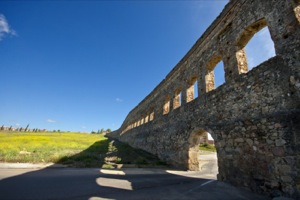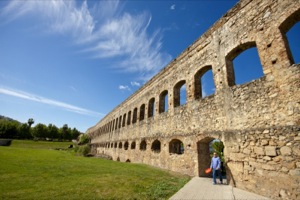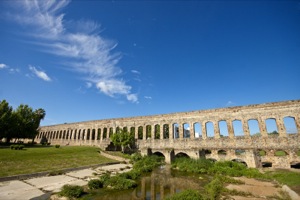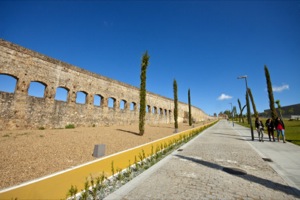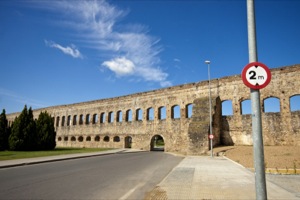Art and culture
Rabo de Buey Aqueduct
Mérida was supplied with water by three main aqueducts in Roman times. One of them was the one called Rabo de Buey, or also San Lázaro.
- Explore
- Rabo de Buey Aqueduct
Location and Contact:
- Contact person: Oficina de Turismo de Mérida
- Tel.:+34 924 38 01 00
- Email: promocion@turismomerida.org
- Website address: www.turismomerida.org/
-
Mérida was supplied with water by three main aqueducts in Roman times. One of them was the one called Rabo de Buey, or also San Lázaro.
One of the most important aqueducts in the city of Mérida is that of Rabo de Buey, of which only three columns remain today of the many that made up this construction that was over a kilometre long.
Its subsequent name was on account of the hermitage dedicated to San Lázaro, which was pulled down mid-20th century. Historians and intellectuals do not agree on the date this monument was built. It is only known that it was of vital importance during Roman times.
The visitor can see that the three columns that remain are of different proportions and have a buttress on the front, and are joined together by semi-circular arches. The aqueduct continued to the city of Mérida, where some remains of the channel have been found, from where it is believed that it took two different directions: one towards the area of the theatre and amphitheatres and the other towards the centre of the town.
During the 16th century, a new aqueduct was built over the ruins of the old one, which has been preserved entirely and reformed for recreational use, walks or bicycle rides. Near the San Lázaro aqueduct, we find the ruins of some Roman thermal baths. -
- Construction:
-
- Aqueduct
- Art period:
-
- Romanisation
Gallery:
More suggestions
-
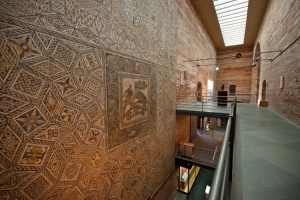
National Roman Art Museum in Mérida
The National Roman Art Museum (MNAR) shows the visitor different sides of daily life in the province of Hispania.
-
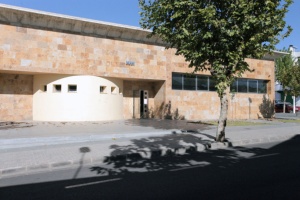
Extremadura Geology Museum
Its collection has made this museum one of the most important of its kind.
-
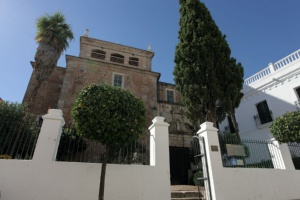
Museum of Visigoth Art and Culture
The collection of Visigoth pieces in this museum brings together relics from Mérida from the 4th-8th centuries, as the capital of the Diocesis Hispaniarum and as the metropolitan capital of the province of Lusitania
-
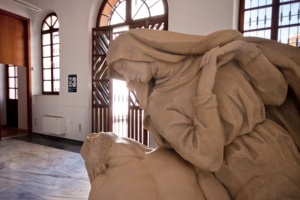
Museum of Mérida
The Museum of the Town of Mérida houses a collection on the Mérida-born sculptor and other pieces that take one on a route through the town's history.
-
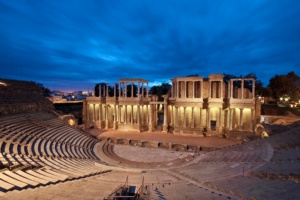
Roman theatre of Mérida
The town of Mérida contains one of the most important archaeological sites in the world, of which the Roman theatre forms part.
-
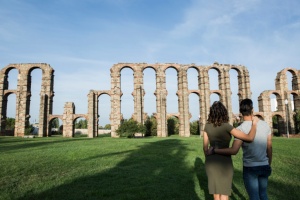
Los Milagros Roman Aqueduct
This partially preserved massive aqueduct was one of the large works at Emerita Augusta for supplying water to the city.
-
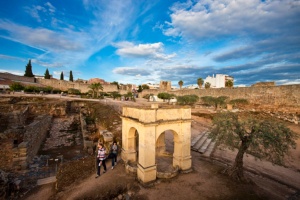
Mérida citadel from the Moslem period
A walled fortress of impressive size and beauty commissioned by Abderramán II in the year 835.
-
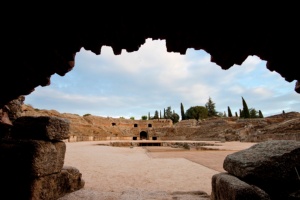
Roman amphitheatre of Mérida
The setting for fights between gladiators and wild beasts in Roman times, a large part of the structure of this amphitheatre is preserved intact today.
-
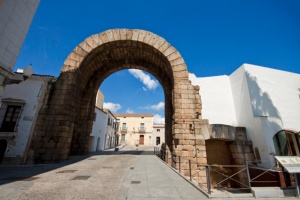
Roman arch of Trajan
This arch was erected as part of the structure providing entry to a temple for imperial worship It is now the only one left of the three that existed formerly.
-
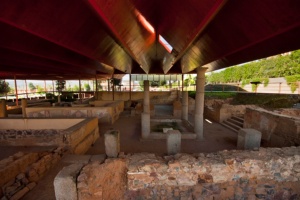
House of Mitreo
A dwelling from Roman times, built on the outskirts of Emerita Augusta, where luxury and comfort were not lacking.

